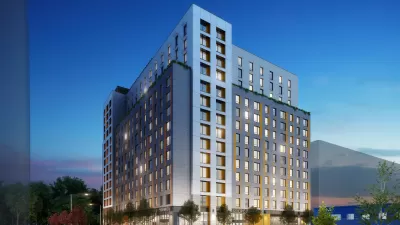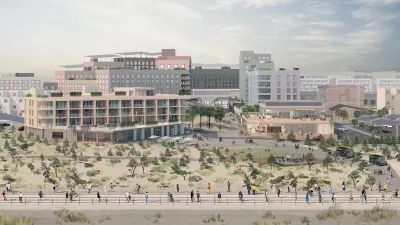In NYC, unlike most areas in the United States, buildings, rather than transportation, are the major source of carbon emissions. Passive buildings, with their negligible heating and cooling costs, could help meet carbon reduction goals.
According to the Passivhaus Institut, a "house built to passive standards uses less than a quarter of the energy of a traditionally powered home," writes Alison Gregor for The New York Times. While "few homes have been built in the U.S. that use the principles of the 'passive house' to reduce heating and cooling, passive buildings appear poised to enter New York City’s housing market in a much bigger way. Large projects delivering hundreds of new passive units to market are in the works, and city officials are watching closely."

Credit: © 2015 Passive House Alliance.
Passive Buildings defined:
Passive buildings maintain a comfortable interior climate without active heating and cooling systems — that means no more radiators or air-conditioning units for people who live in environments more temperate than New York’s. This is done using, among other things, an airtight building envelope and a system that exchanges interior and exterior air, usually an energy recovery ventilator. In New York, small heating and cooling systems are generally included in passive homes.
Passive Building potential in New York City
"Worldwide, buildings are responsible for about 40 percent of carbon emissions, but in New York City, it’s closer to 71 percent," writes Gregor. If New York City is to realize Mayor Bill de Blasio's goal of reducing greenhouse gas (GHG) emissions by 80 percent below 2005 levels by 2050, passive buildings may play an instrumental role.
FULL STORY: The Passive House in New York

Maui's Vacation Rental Debate Turns Ugly
Verbal attacks, misinformation campaigns and fistfights plague a high-stakes debate to convert thousands of vacation rentals into long-term housing.

Planetizen Federal Action Tracker
A weekly monitor of how Trump’s orders and actions are impacting planners and planning in America.

In Urban Planning, AI Prompting Could be the New Design Thinking
Creativity has long been key to great urban design. What if we see AI as our new creative partner?

King County Supportive Housing Program Offers Hope for Unhoused Residents
The county is taking a ‘Housing First’ approach that prioritizes getting people into housing, then offering wraparound supportive services.

Researchers Use AI to Get Clearer Picture of US Housing
Analysts are using artificial intelligence to supercharge their research by allowing them to comb through data faster. Though these AI tools can be error prone, they save time and housing researchers are optimistic about the future.

Making Shared Micromobility More Inclusive
Cities and shared mobility system operators can do more to include people with disabilities in planning and operations, per a new report.
Urban Design for Planners 1: Software Tools
This six-course series explores essential urban design concepts using open source software and equips planners with the tools they need to participate fully in the urban design process.
Planning for Universal Design
Learn the tools for implementing Universal Design in planning regulations.
planning NEXT
Appalachian Highlands Housing Partners
Mpact (founded as Rail~Volution)
City of Camden Redevelopment Agency
City of Astoria
City of Portland
City of Laramie




























